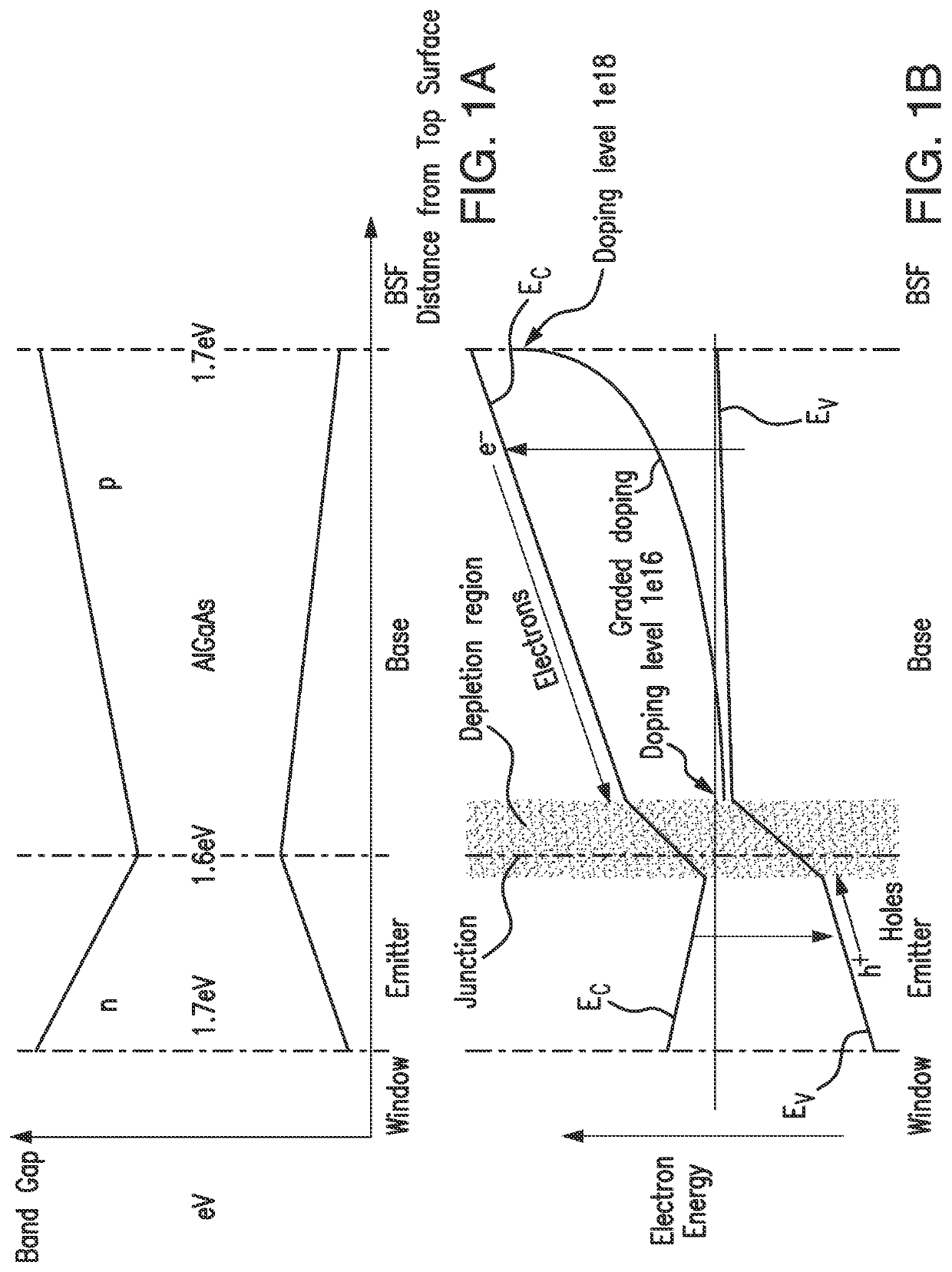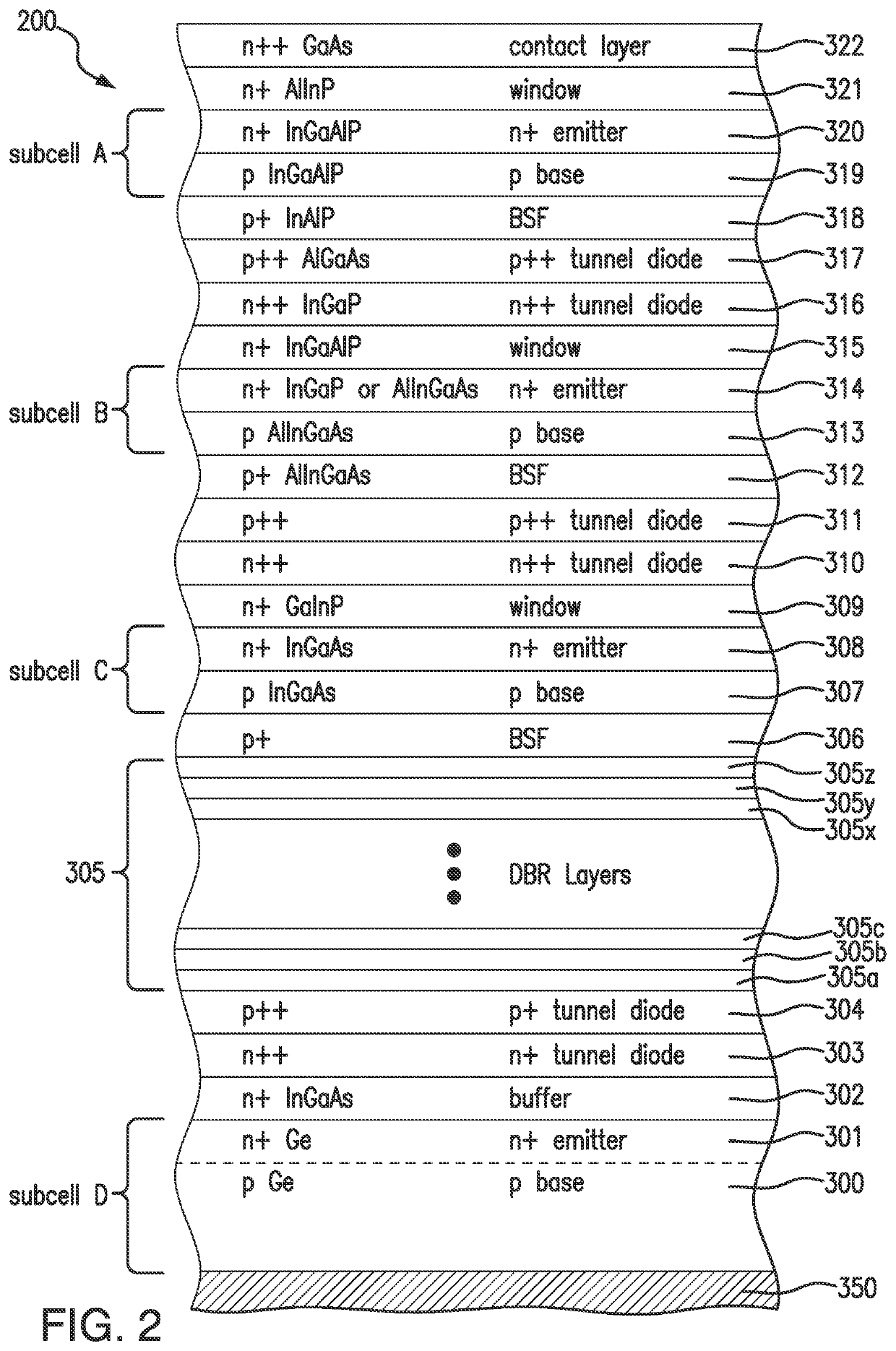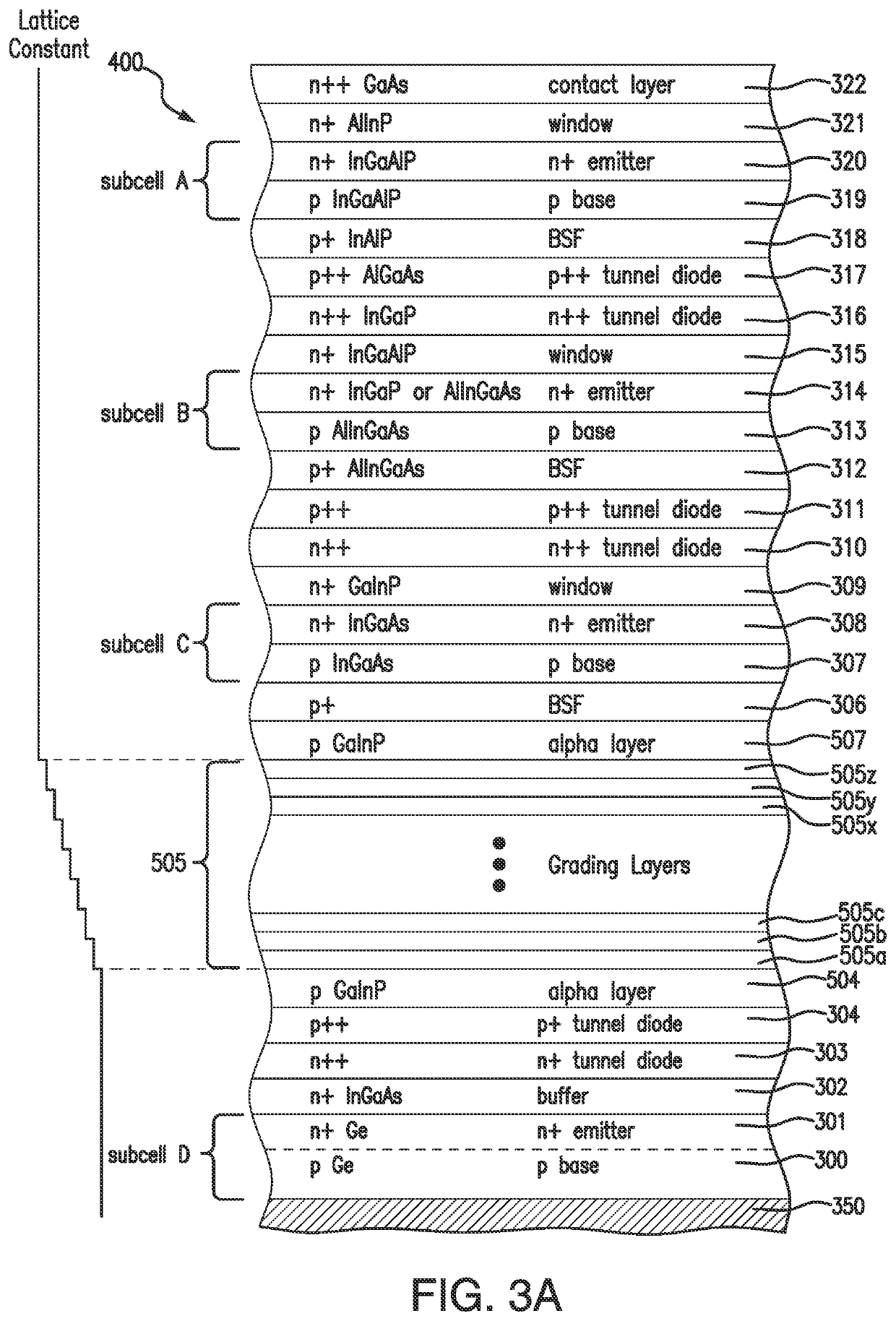Multijunction solar cells
a solar cell and multi-junction technology, applied in the field of solar cells and the fabrication of solar cells, can solve the problems of increasing the complexity of properly specifying and manufacturing, affecting the current collection of the active layer, and unable to meet the requirements of solar cell arrays, etc., to achieve enhanced hole-electron pairs, improved current collection in the active layer, and enhanced hole-electron pair generation
- Summary
- Abstract
- Description
- Claims
- Application Information
AI Technical Summary
Benefits of technology
Problems solved by technology
Method used
Image
Examples
first embodiment
[0128]FIG. 1A is a graph of the band gap throughout the thickness of a solar subcell, according to the present disclosure.
[0129]FIG. 1B is a cross-sectional view of the solar subcell of FIG. 1A depicting the movement of electrons and holes throughout the thickness of the layer due to the internal electric field. The conduction Ec and the valence Ev bands are illustrated, as well as the emitter and base regions of the solar subcell, the junction, the depletion region, and graded doping throughout the thickness of the subcell.
[0130]To illustrate an embodiment of a multijunction solar cell device of the present disclosure, FIG. 2 is a cross-sectional view of an embodiment of a four junction solar cell 200 after several stages of fabrication including the growth of certain semiconductor layers on the growth substrate up to the contact layer 322 according to the present disclosure.
[0131]As shown in the illustrated example of FIG. 2, the bottom subcell D includes a growth substrate 300 fo...
second embodiment
[0150]FIG. 3A is a cross-sectional view of a four junction solar cell 400 after several stages of fabrication including the growth of certain semiconductor layers on the growth substrate up to the contact layer 322, with various subcells being similar to the structure described and depicted in FIG. 2. In the interest of brevity, the description of layers 350, 300 to 304, and 306 through 322 will not be repeated here.
[0151]In the embodiment depicted in FIG. 3A, an intermediate graded interlayer 505, comprising in one embodiment step-graded sublayers 505a through 505z, is disposed over the tunnel diode layer 304. In particular, the graded interlayer provides a transition in lattice constant from the lattice constant of the substrate to the larger lattice constant of the middle and upper subcells.
[0152]The graph on the left side of FIG. 3A depicts the in-plane lattice constant being incrementally monotonically increased from sublayer 505a through sublayer 505z, such sublayers being ful...
third embodiment
[0162]In the third embodiment depicted in FIG. 3B, an intermediate graded interlayer 505, comprising in one embodiment step-graded sublayers 505a through 505zz, is disposed over the tunnel diode layer 304. In particular, the graded interlayer provides a transition in lattice constant from the lattice constant of the substrate to the larger lattice constant of the middle and upper subcells, and differs from that of the embodiment of FIG. 3A only in that the top or uppermost sublayer 505zz of the graded interlayer 506 is strained or only partially relaxed, and has a lattice constant which is greater than that of the layer above it, i.e., the alpha layer 506 (should there be a second alpha layer) or the BSF layer 306. In short, in this embodiment, there is an “overshoot” of the last one sublayer 505zz of the grading sublayers, as depicted on the left hand side of FIG. 4B, which shows the step-grading of the lattice constant becoming larger from layer 505a to 505zz, and then decreasing ...
PUM
 Login to View More
Login to View More Abstract
Description
Claims
Application Information
 Login to View More
Login to View More - R&D
- Intellectual Property
- Life Sciences
- Materials
- Tech Scout
- Unparalleled Data Quality
- Higher Quality Content
- 60% Fewer Hallucinations
Browse by: Latest US Patents, China's latest patents, Technical Efficacy Thesaurus, Application Domain, Technology Topic, Popular Technical Reports.
© 2025 PatSnap. All rights reserved.Legal|Privacy policy|Modern Slavery Act Transparency Statement|Sitemap|About US| Contact US: help@patsnap.com



